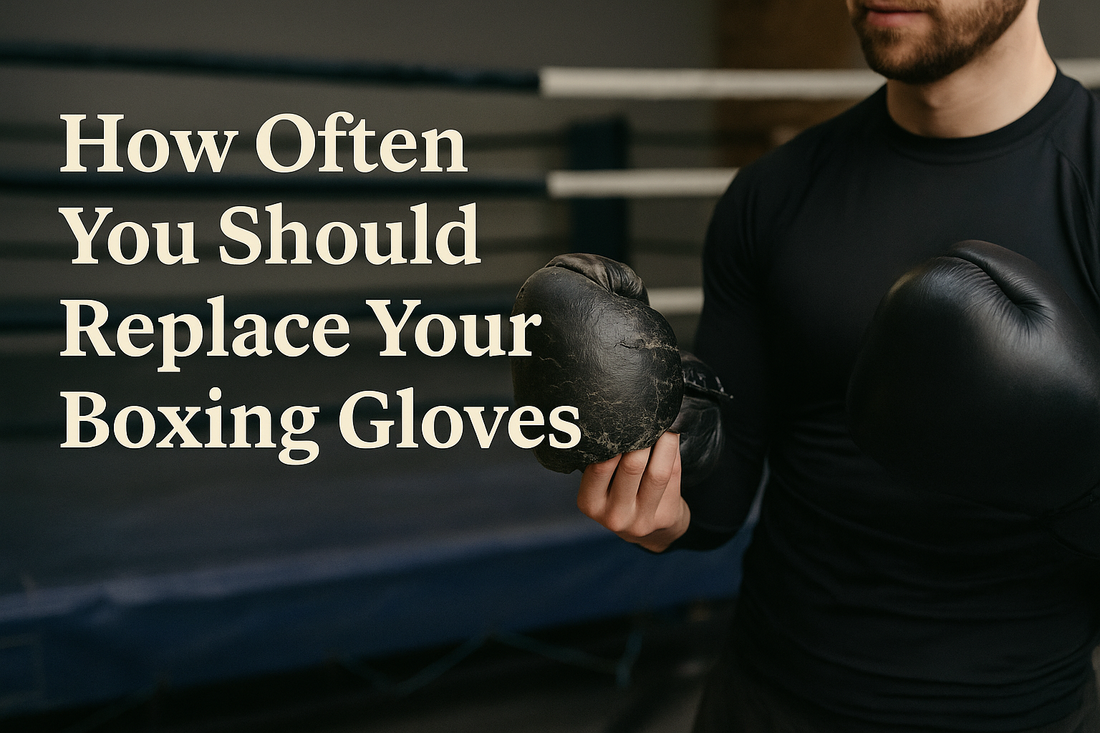
How Often You Should Replace Your Boxing Gloves
When to Retire Your Old Pair and Invest in New Protection
Whether you’re hitting the heavy bag, sparring, or prepping for a boxing competition, your gloves are your most important piece of equipment. But like any high-use gear, they don’t last forever — and waiting too long to replace them can lead to injuries, poor performance, and even damaged boxing knuckles.
So how often should you replace your gym training gloves? The answer depends on how often you train, the quality of your gloves, and the type of work you’re doing.
1. Why Replacing Gloves Matters
Your gloves protect you in two ways:
- Your hands and wrists from impact damage
- Your training partners from unnecessary force during sparring
Over time, even the best gloves lose padding integrity, wrist support, and hygiene. Worn-out padding means your boxing knuckles take more impact, while weakened wrist support can increase sprain risk.
2. Average Lifespan of Gym Training Gloves
Here’s a general guide:
|
Training Frequency |
Average Lifespan |
Notes |
|
1–2 sessions/week |
18–24 months |
Lower wear rate, but check for padding breakdown |
|
3–4 sessions/week |
12–18 months |
Moderate wear; higher sweat and impact load |
|
5–6 sessions/week |
6–12 months |
Heavy use; gloves wear faster from constant work |
Pro Tip: If you train both bag work and sparring regularly, have two pairs of gloves — one for the bag, one for sparring — to extend lifespan and maintain hygiene.
3. Signs It’s Time to Replace Your Gloves
You don’t have to wait for a glove to completely fall apart. Here are telltale signs your gym training gloves need retiring:
- Padding feels thin or uneven over the knuckle area
- Strong odor that remains after cleaning
- Loose or cracked stitching around the wrist or thumb
- Flattened shape with no “snap” when punching
- You start feeling more shock in your boxing knuckles than usual
4. Different Gloves for Different Purposes
- Training gloves – Designed for daily bag work and pad drills. Expect heavier wear and shorter replacement cycles.
- Sparring gloves – Typically 16oz with softer padding for partner safety. Padding breakdown here means more risk to both fighters.
- Competition gloves – Used only for fight night, often lighter (8–10oz for pros), replaced frequently by promoters and fighters for optimal performance.
If you’re moving toward boxing competition, having fresh, properly padded gloves isn’t optional — it’s part of ensuring fairness and safety.
5. How to Extend the Life of Your Gloves
Even if you train daily, proper care can buy you extra months:
- Always use hand wraps to absorb sweat and stabilize your wrist
- Air gloves out after every session — avoid keeping them in a closed gym bag
- Wipe the inside with a clean, damp cloth to prevent bacteria buildup
- Store them in a dry, cool area
- Rotate between pairs if possible
6. When in Doubt, Upgrade
If your gloves are showing multiple signs of wear, it’s time to invest in a new pair. Not only will this protect your boxing knuckles, but fresh gym training gloves will improve your comfort, accuracy, and confidence in both training and boxing competition.
Step Into the Ring with Fereli
Whether you train twice a week or twice a day, Fereli’s handcrafted gym training gloves are built with premium top-grain leather, multi-layered padding, and ergonomic wrist support — perfect for bag work, sparring, or competition prep.
Pair them with Fereli’s air pads to refine your accuracy and timing without putting unnecessary wear on your sparring gloves.
Follow us on Instagram @fereliboxing for training tips, gear drops, and behind-the-scenes boxing content.
If you enjoyed this, check out our previous post: The Psychology of Stepping into the Ring: Gear as Ritual.
